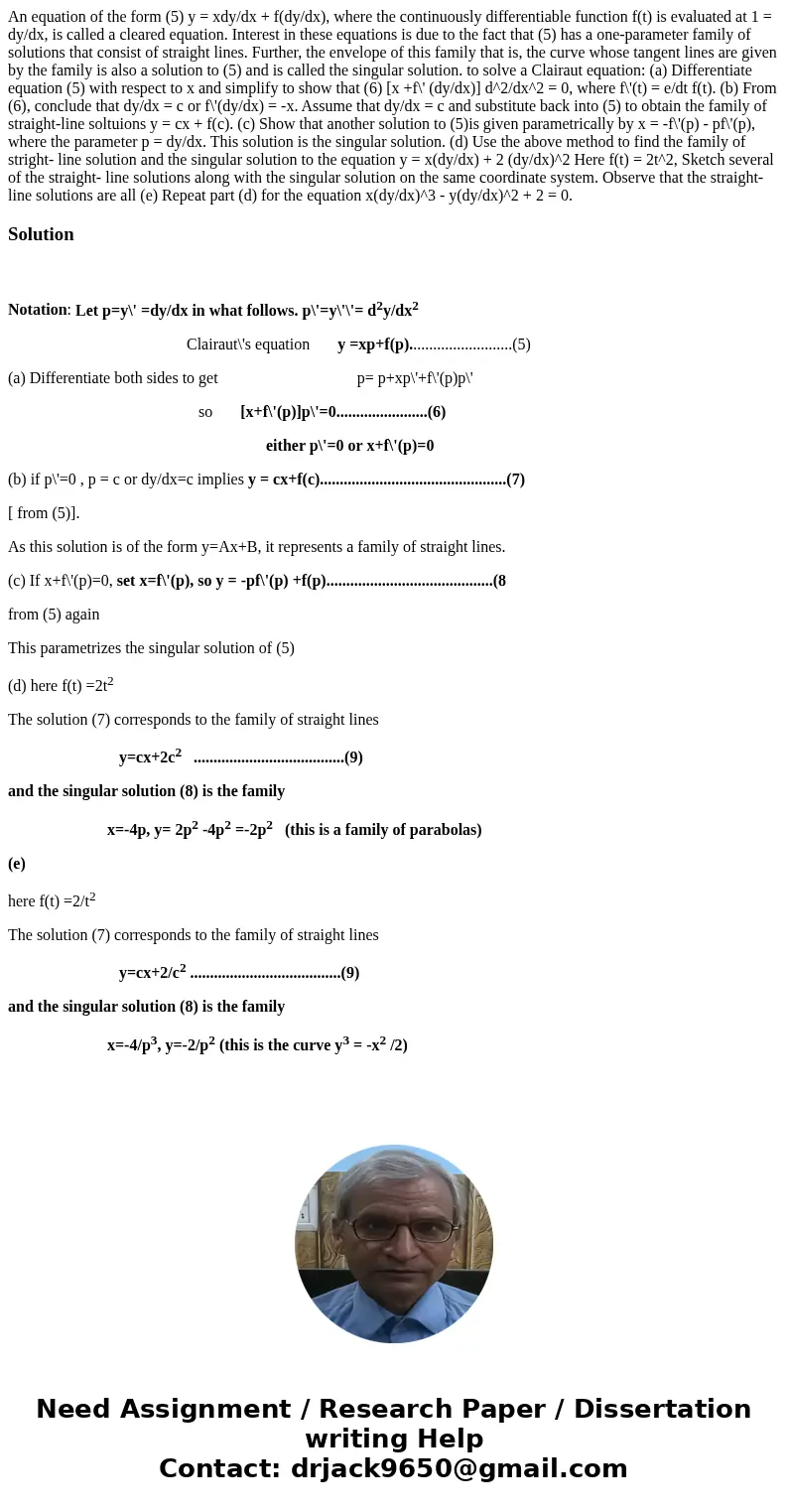An equation of the form (5) y = xdy/dx + f(dy/dx), where the continuously differentiable function f(t) is evaluated at 1 = dy/dx, is called a cleared equation. Interest in these equations is due to the fact that (5) has a one-parameter family of solutions that consist of straight lines. Further, the envelope of this family that is, the curve whose tangent lines are given by the family is also a solution to (5) and is called the singular solution. to solve a Clairaut equation: (a) Differentiate equation (5) with respect to x and simplify to show that (6) [x +f\' (dy/dx)] d^2/dx^2 = 0, where f\'(t) = e/dt f(t). (b) From (6), conclude that dy/dx = c or f\'(dy/dx) = -x. Assume that dy/dx = c and substitute back into (5) to obtain the family of straight-line soltuions y = cx + f(c). (c) Show that another solution to (5)is given parametrically by x = -f\'(p) - pf\'(p), where the parameter p = dy/dx. This solution is the singular solution. (d) Use the above method to find the family of stright- line solution and the singular solution to the equation y = x(dy/dx) + 2 (dy/dx)^2 Here f(t) = 2t^2, Sketch several of the straight- line solutions along with the singular solution on the same coordinate system. Observe that the straight-line solutions are all (e) Repeat part (d) for the equation x(dy/dx)^3 - y(dy/dx)^2 + 2 = 0.
Notation: Let p=y\' =dy/dx in what follows. p\'=y\'\'= d2y/dx2
Clairaut\'s equation y =xp+f(p)..........................(5)
(a) Differentiate both sides to get p= p+xp\'+f\'(p)p\'
so [x+f\'(p)]p\'=0.......................(6)
either p\'=0 or x+f\'(p)=0
(b) if p\'=0 , p = c or dy/dx=c implies y = cx+f(c)...............................................(7)
[ from (5)].
As this solution is of the form y=Ax+B, it represents a family of straight lines.
(c) If x+f\'(p)=0, set x=f\'(p), so y = -pf\'(p) +f(p)..........................................(8
from (5) again
This parametrizes the singular solution of (5)
(d) here f(t) =2t2
The solution (7) corresponds to the family of straight lines
y=cx+2c2 ......................................(9)
and the singular solution (8) is the family
x=-4p, y= 2p2 -4p2 =-2p2 (this is a family of parabolas)
(e)
here f(t) =2/t2
The solution (7) corresponds to the family of straight lines
y=cx+2/c2 ......................................(9)
and the singular solution (8) is the family
x=-4/p3, y=-2/p2 (this is the curve y3 = -x2 /2)

 Homework Sourse
Homework Sourse